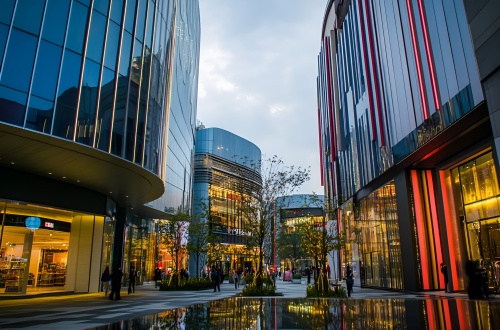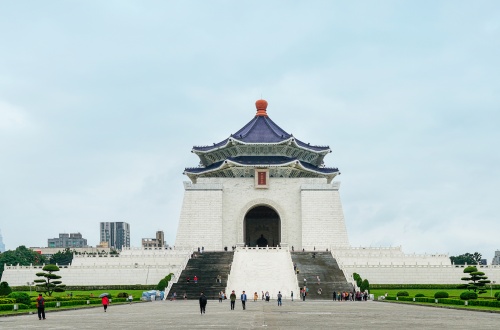Taipei Longshan Temple

Taipei's Longshan Temple, first built during the Qianlong period of the Qing Dynasty, is a famous Level 3 Historic Site in Taiwan. It mainly enshrines Guanyin Bodhisattva, and also worships Mazu, Wenchang Jun and other deities, serving as an important carrier of diverse beliefs.
- Chinese name:龙山寺 Lóngshān Sì
- Recommended Duration: 1-2 hours
- Entrance Fee: Free
- Opening Hours: 06:00 - 22:00 (open all year round)
- Best time to visit: March to May, September to November
- Address: No. 211, Guangzhou Street, Wanhua District, Taipei City (near the intersection of Guangzhou Street and Xiyuan Street)
-
How to get there:
By Metro: Take Metro Bannan Line (Line 5) to Longshan Temple Station, exit from Exit 1, and walk a few minutes to reach the temple
By Bus: Take buses 49, 231, 234, 242, etc., to Longshan Temple Station, then walk to the temple
Highlights of Taipei Longshan Temple
The Sanchuan Hall and Taiwan's Only Bronze Dragon Columns
As the facade of Longshan Temple, the Sanchuan Hall is the essence of its architectural art. This 11-bay front hall includes the Sanchuan Hall, Dragon Gate Hall and Tiger Gate Hall. Its roof features the "broken-eave arrow-rise" design paired with "two dragons guarding a pearl" cut-and-paste decorations, exuding grandeur. Inside the hall stands a pair of bronze coiling dragon columns—unique in Taiwan—masterpieces by Hong Kunfu and Li Luxing. The dragons twist and soar upward, with vivid, three-dimensional Investiture of the Gods figures carved on the columns. The stone walls in front of the hall are engraved with Romance of the Three Kingdoms reliefs and auspicious patterns, showcasing exquisite craftsmanship and the ingenuity of Minnan architecture.
The Main Hall and the Nail-and-Iron-Free Spiral Ceiling Well
The Main Hall is the core of Longshan Temple. It not only enshrines Guanyin Bodhisattva (the main deity) but also shows the best of architectural skills. 42 pillars support it, and it has a double-eaved gable-and-hip roof plus a surrounding corridor. Stone carvings by famous calligraphers on the outer walls give it deep cultural meaning. Inside, the most amazing part is the spiral ceiling well. It’s made entirely by stacking brackets, and stays stable without any nails or iron. Its spiral shape looks striking and means "rising step by step"—a lucky sign. In the center, an exquisitely carved shrine holds a Guanyin statue. The statue survived WWII bombings. Legend says the deity "blessed" people to leave early, so no one died or got hurt. Here, you can feel how solemn the statue is and wonder at the wisdom of traditional architecture.
Roof Jianzhan (Cut-and-Paste) and Jiaozhi Pottery Art
Longshan Temple’s roof is a small example of Taiwan’s jianzhan art—and a visual highlight you can’t miss. Dragons, phoenixes, unicorns (qilin) and other lively lucky figures cover the roof ridges and eaves. All are made with jianzhan: lead wires form the frame, mortar shapes it, then colored glass tiles and jiaozhi pottery are pasted on. Even after 100 years, they stay bright. Particularly classic are the "Eight Immortals Crossing the Sea" jianzhan on Sanchuan Hall’s main ridge and "Fortune, Status and Longevity" jianzhan on the rear hall’s ridge. They have cultural meanings and also hold early settlers’ hopes for a good life. Stop and look up, and you’ll feel the energy and depth of traditional craft.
Diverse Religious Landscape and Historical Plaque
Longshan Temple has a special feature: "gathering of various deities" for different religions. Its main deity is Guanyin Bodhisattva, a spiritual branch from Anhai Longshan Temple in Quanzhou. It also worships Mazu, Wenchang Jun and other deities. Confucianism, Buddhism and Taoism live together peacefully here, so it witnesses immigrant culture. The rear hall is where Confucian and Taoist deities are kept, with strong traditional folk feelings. The "Cihui Yuanyin" plaque inside is very important. In the 10th year of Guangxu’s reign, local people used the temple’s name to organize a volunteer army and drove back the French army. The emperor gave this plaque in return, which made the temple part of Taipei’s modern history. Festive activities here also show how faith and daily life mix.
Educational Value
Longshan Temple was first built in the 5th year first built in the 5th year of the Qianlong reign of the Qing Dynasty (1740) with funds raised by immigrants from Anhai, Quanzhou, Fujian. The main deity worshipped here, Guanyin Bodhisattva, is a "spiritual branch" of the Guanyin from Anhai Longshan Temple in Quanzhou. This "building a temple with a spiritual branch" model was an important way for early Minnan immigrants to continue their hometown beliefs and unite their community in Taiwan. For the immigrants back then, Longshan Temple was not only a place to pray, but also a link for them to find cultural identity and maintain fellow-townsman bonds on this unfamiliar land.
Activities to do at Taipei Longshan Temple
Participate in Festival Folk Activities: In the first lunar month, a lantern exhibition is held at Longshan Temple. Colored lanterns light up the ancient temple, making the atmosphere strong. When the Bathing the Buddha Festival comes in April, believers gather to bathe the Buddha and pray with palms together. Tourists can join them to feel its solemnity. The Ullambana Festival in July is lively and lets people experience traditional folk culture in an immersive way.
Drop us a line and we'll connect you with the top China expert in no time!
 Jiufen Old Street
Jiufen Old Street  Ximending
Ximending  Kenting National Park
Kenting National Park  Chiang Kai-shek Memorial Hall
Chiang Kai-shek Memorial Hall